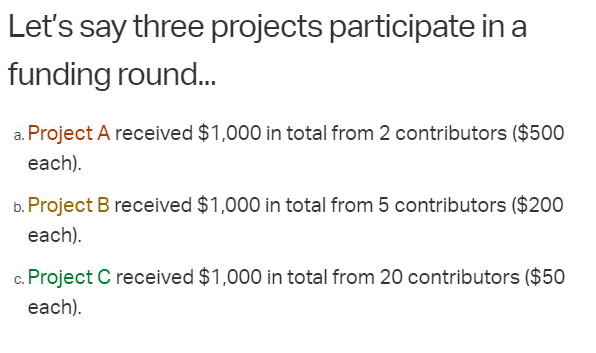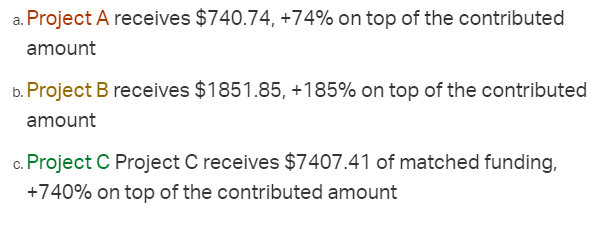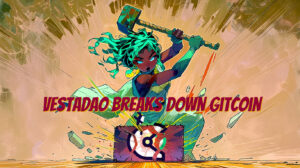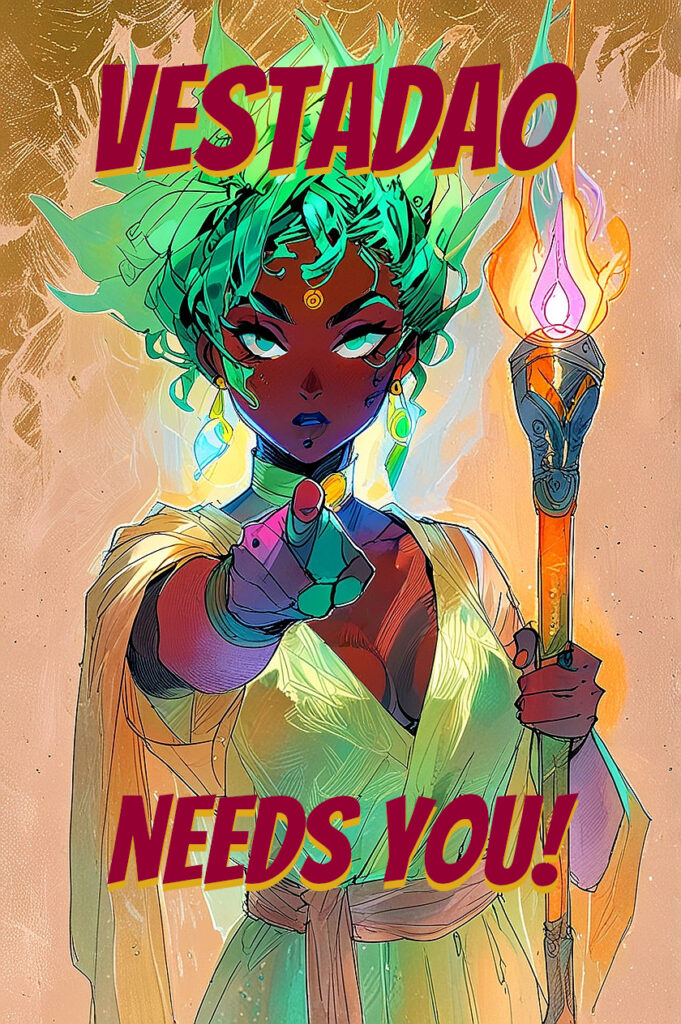Many of you will have seen the words “gitcoin” and “funding” thrown around recently. Using the patented Metis marketing style, this has been done with very little thought to explaining what any of it is or why you should care. But fear not, Vesta is here to break it all down for you.
Here you will find everything we know about Gitcoin as far as it concerns Metis projects. This includes applying for the grant, rules, and strategy.
We will be updating this guide as new information comes to life so make sure to check back. Additionally if you’re a Metis user looking to take part by “voting” for projects; we’ll be releasing a separate guide for that in the coming days, and will drop the link here when we do.
If you find this guide helpful, please consider giving it a share. We’d also love it if you checked out our proposal on Gitcoin. And would love it even more if you considered donating!
What is Gitcoin and why should I care?
Gitcoin is a platform that helps facilitate early investment for projects through “quadratic funding” (more on this below). Metis has partnered with Gitcoin to introduce a new format for projects seeking their first funding. From what we’ve learned through extensive study of the Metis announcement and consultation with several professors in buzzword linguistics; this will be a required step for any project that wishes to receive Metis funding (some exceptions outlined below).
Key data for round 1:
- Application deadline:
13th of September, as you’ll notice this has overlap with the voting period, so getting yours in early is probably better.
- Voting/donation dates:
Between the 10th and the 26th of September, 2024
- Total matched funding:
Metis has stated they will make a total of $100k in Metis available; no project will be able to receive more than 10% ($10k) in matched funding.
What the hell is quadratic funding?
Quadratic funding is a way to make grant allocation more decentralized. Users “vote” through donating to project’s grant pools. The equation used to calculate a project’s grant amount takes into account both the money amount AND the number of wallets that donated.
We get the impression that the actual formula for calculating just how much impact each side of the equation has is a secret. Below, however, is an example provided by Gitcoin themselves (check source link for more):

They go on to explain:
“The final distribution of funds is calculated by using the quadratic funding formula, where the number of contributions matters more than the amount contributed.”

Who should apply?
For most projects this process appears to be a necessary step in obtaining Metis funding in general, and will open up opportunities for receiving further funding in future. The exceptions to this appears to be:
- Large projects with a proven track record on other chains.
- Projects with demonstrable “traction” on the Metis network.
- Projects that directly collaborate with Metis on “pioneering” tech
If you are a project that wants Metis funding and do not fit into any of the above categories then chances are that the Gitcoin process is for you.
For this round specifically Metis has indicated eligible “categories” of projects. You can (try to) read the full guidelines LINKhttps://ceg.vote/t/metis-grants-with-gitcoin/3543 here LINKThese include:
- Memecoins (non-offensive was specifically mentioned).
- Web3 Gaming Projects
- Projects that are tied to Real World Assets (RWA)
- Community Projects (with an emphasis on “on-chain” identity)
Metis has indicated that there will be multiple rounds of funding, so if you don’t fit into this category or simply aren’t ready yet, don’t worry – there will be future opportunities.
How to Apply:
Below is a step by step process for applying to the Metis funding round along with some helpful steps if you get stuck. We can currently only speak to our own experience navigating the site, but would welcome feedback from others if you run into problems and/or find workarounds.
Before you start, you’ll need the following:
- Project Name
- Project Logo and Banner (300x300px and 1500x500px)
- A wallet with Metis for gas money.
- Project wallet address.
- A proposal (more on this below).
- Answers to project questions (more on this below).
How to Create and Edit Your Project in Builder (Gitcoin)
What is Builder? Builder is your home base for managing projects across different grants rounds. Once you create a project proposal in Builder, you can reuse it to apply for any rounds you’re eligible for.
Step 1: Connect Your Wallet
Go to https://builder.gitcoin.co and click “Connect Wallet”. We eventually used MetaMask for this process. If you have Rabby installed, you might encounter issues (we did) where it gets stuck on the deployment step. We found using Metamask without Rabby got around this. We’d love any feedback on success or failure with other wallets.
Step 2: Create Your Project
Once your wallet is connected, it’s time to create your project.
- Click either the “+ New Project” or “Create a Project” button.
- Choose a network. For Metis projects, select Metis Andromeda as your network. Make sure you have enough gas funds to save and deploy your project.
- Fill in Project Details and Proposal.
- Upload a project logo (300×300 px) and a banner (1500×500 px).
- You can use “Markdown” for formatting your proposal. If you’re new to Markdown or don’t know what it is, check out this tool to easily convert your text to Markdown format.
Tips for the proposal:
The project proposal will be the user facing part of your application, as opposed to the project questions which will only be seen by the evaluation team. There will likely be lots of overlap between these two.
Again we can only speak our opinion (albeit a quite informed one) on this. We believe your proposal should include at least some of the following attributes:
- Attention grabbing intro.
- A concise overview of your project and aims.
- Who the team is and any relevant background/experience.
- Answer the “whys”. Why on Metis? Why now? Why should people care?
- An overview of how funding would help you help the network.
- Easy to read and engaging.
You can read our proposal in full on the Gitcoin website here.
Step 3: Connect Your Social Accounts
On the next screen, you’ll have the option to verify your social accounts. Make sure you’re already logged into your project’s Twitter account before clicking “Verify.” You can also connect GitHub or Gitbook for project documentation. We personally opted to simply go for our twitter.
Applying to the Metis Andromeda Quadratic Funding Round
Now you have your Gitcoin profile set up, but you’re not done yet. You still need to apply for the specific grant round.
Step 4: Find the right round and apply.
Once your project profile is set up, head over to the Gitcoin Explorer and double check you are on the “Metis Ecosystem QF” page. Click Apply to start the grant application process.
Step 5: Answer Project Questions
After applying, you’ll be asked a series of questions about your project. We’d recommend having the answers ready for these, so you can just paste them in. We have listed the questions in the section below alongside some tips on answering them.
These questions will determine whether you are accepted into the round as a project, and your answers will only be viewable by the evaluation team.
Once again you can use Markdown in order to format your answers.
You can see our answers in full here.
Step 6: Preview and Publish
After filling out all the details and questions, you’ll have a chance to preview your answers and check the formatting. This is your opportunity to fix any typos or make sure your answers look the way you want them to.
- Once you’re satisfied, click Submit.
- A wallet transaction will pop up, requiring you to sign it and pay a gas fee to deploy your project.
- Once again, we had issues with Rabby installed and eventually had to use metamask instead.
The “Project Questions” and Tips for Answering Them:
The Project Questions in step 5 are listed below along with tips for answering them. These tips are based on our own opinion on what is important (which may differ from yours) as well as information we’ve picked up from relevant Twitter spaces and conversations with relevant Gitcoin/Metis employees.
General Tip: Those processing the applications might have to go through tons; whilst this is simply an “eligibility” check there’s no harm in making their job easier. There are several buzzwords on the “eligibility criteria section of the CEG page; think about ways in which your project aligns with those goals and look to use the buzzwords yourself where appropriate.
The Questions:
1) Describe your project's approach to community engagement and self-marketing.
This is fairly self explanatory, but; Metis and Gitcoin have both made a point of repeatedly mentioning that they are looking for “collaborative” marketing. This means promoting the process as a whole, and not just your own project.
2) How do you plan to drive user adoption and a supportive environment within the Metis ecosystem?
Again, look to touch on ways in which you’ll look to promote other Metis projects; collaboration rather than competition.
3) Provide a clear roadmap of your project, including key milestones and deliverables. You may provide a link to an accompanying document or sheet if needed.
This will obviously vary from project to project. In our case we have many elements of our roadmap that might not be possible without certain funding levels. We therefore opted to break our roadmap into parts;
- Things that have already happened/are on going.
- Things that will happen without funding or with minimal funding.
- Relevant ambitions that will require a higher amount of funding.
4) How does your team's expertise contribute to the successful execution of the project? Please provide relevant background information
Look to include not only web3 experience, but also how your “real world” experience might make you a great candidate to run your project.
5) Provide a breakdown of how you plan to utilize the funds in increments (e.g., first $2k, next $2k, etc.) to maximize your project's impact within the Metis ecosystem. Also, explain how you would adjust your plans if you still need to meet your full funding target and raise meaningful funds
This is much easier than the roadmap section; we made a note that our estimates were based on “realistic” assumptions rather than padding the numbers. We formatted ours by putting our goals into “order of priority”.
6) Is this a new or ongoing project? If ongoing, briefly describe your past contributions to the Metis ecosystem, including any CVP approval, supplemental support received, and specific results achieved.
Self explanatory.
7) Is there anything else you'd like to share about your project, previous work, or other affiliations that may help determine project eligibility?
Self explanatory.
FAQ/Important shit to know.
This is stuff we’ve picked up from attending spaces and asking sources at Metis and Gitcoin specific questions. A lot of this stuff is important. As in, it might get you disqualified if you don’t know some of this shit.
Should I make multiple wallets to donate from?
We asked this specific question and have it on good authority that the Gitcoin #Sybil Detection# is very good. If you are detected gaming the system it will not only disqualify you from any future funding, it might also reduce your funding in THIS round.
Can I reward donors?
No. Incentivising donations with tokens OR “reward points” of any sort is not allowed. Zero quid pro quo.
Why should I collaborate? Why help other projects?
Well, if the warm fuzzy feeling you get inside isn’t enough, then there are also real tangible reasons you should look to promote the process rather than just yourself.
Firstly, the way word of mouth marketting works. The more projects you promote, the more likely someone is to check out the whole thing. If someone checks it out, they’re more likely to tell other people. If they tell other people, those people might come donate to you.
Additionally Metis has hinted at an additional $150k of funding that will be made available at their discrection. If you aren’t playing nice, you probably won’t get any.
I’m submitting on behalf of an organization. Can I use my own wallet to create our Builder application?
Yes, you can. The wallet that creates and submits an application doesn’t have to be the same wallet that receives the payout funds. When applying for a round, it will ask for a payout address. This is where you put in the wallet address of the organization you’re representing.
What if my project doesn’t fall under the categories listed?
Metis team members are encouraging projects to apply even if they don’t feel or are unsure if they fall under the categories listed. This is no guarantee that you will get accepted or receive donations, but this is still good practice to get your pitch together.
How do I know if I’ve successfully applied?
In the project page, look for the “My Applications” section on the right-hand side. This will show the status of your application. If no status is listed under “My Applications” for the specific round, it means you haven’t officially applied yet. Applying for a Gitcoin round is a two-step process:
- Create a proposal in Builder.
- Apply to the round via Explorer.
- If accepted, you will see your project’s profile inside the Metis QF Round page.
Conclusion
We have done our best to be comprehensive in this guide, but please appreciate that we are as new to this as everyone else.
If you feel we’ve missed something please get in touch! The best place to reach us is in our Telegram. Alternatively you can @ us on Twitter/X. We’re happy to update the guide or try to help you with any individual difficulties.
If you found this guide helpful, please consider giving it a share. We’d also love it if you checked out our proposal on Gitcoin. And would love it even more if you considered donating!



